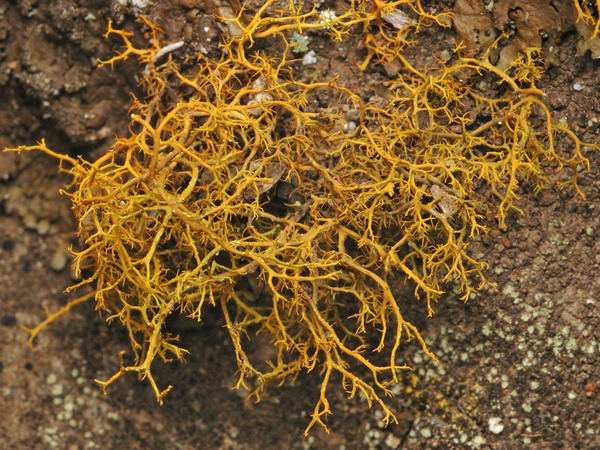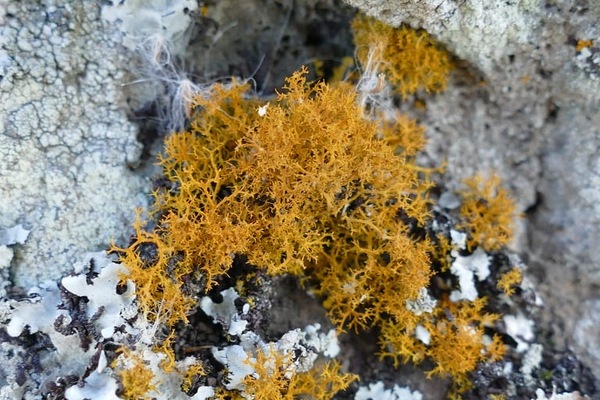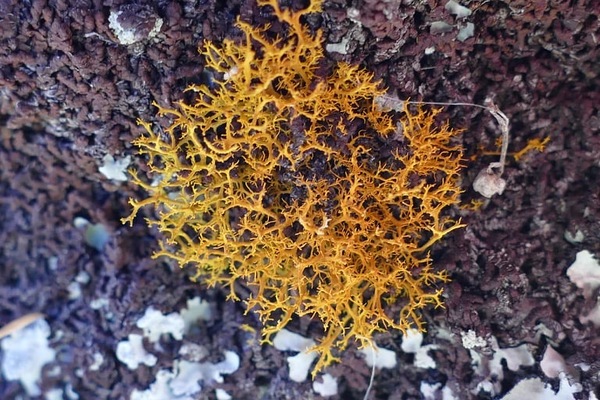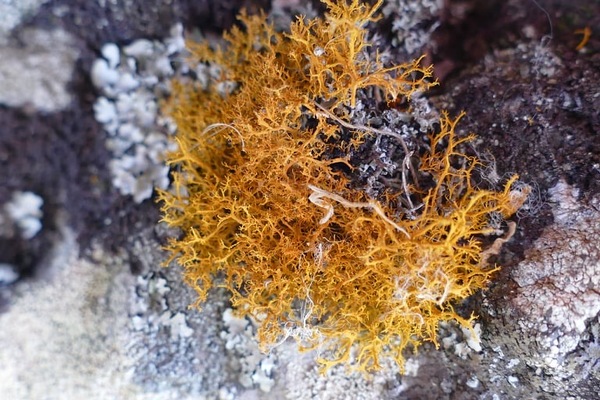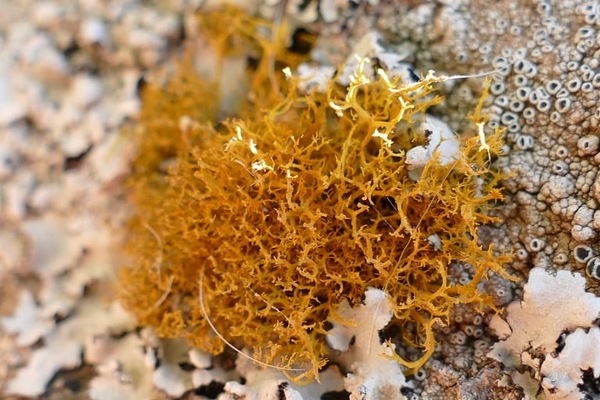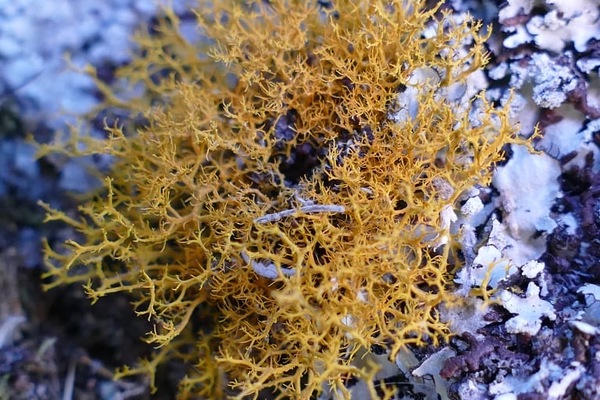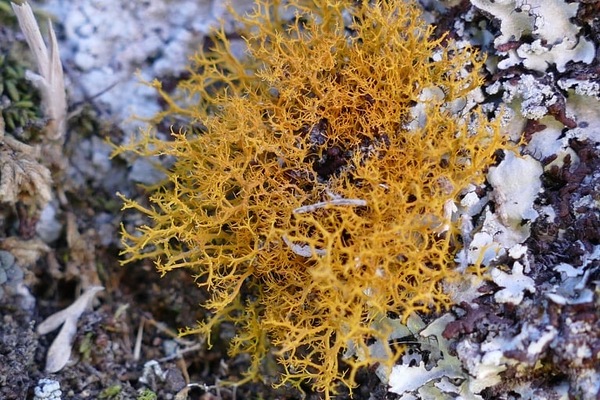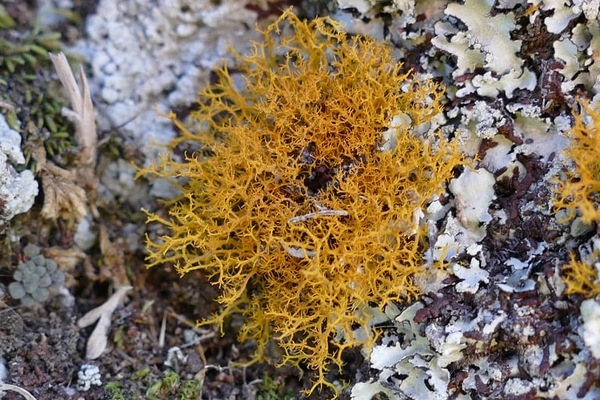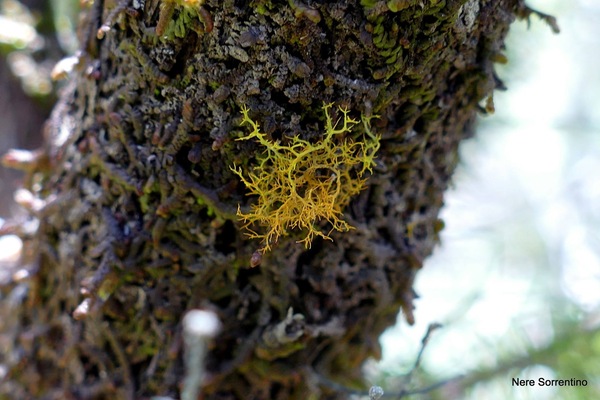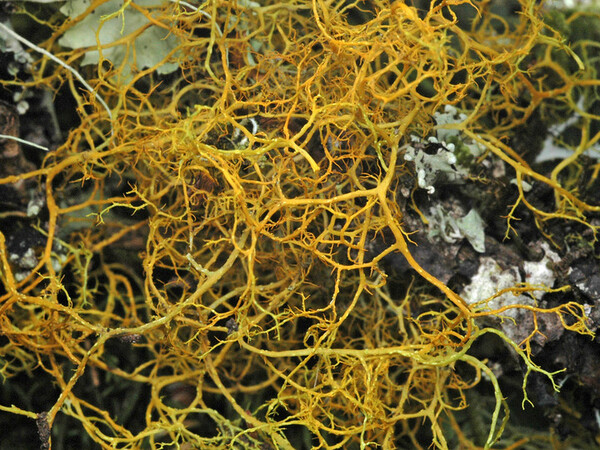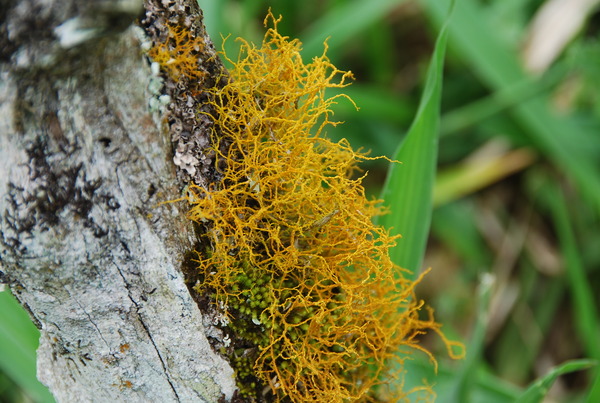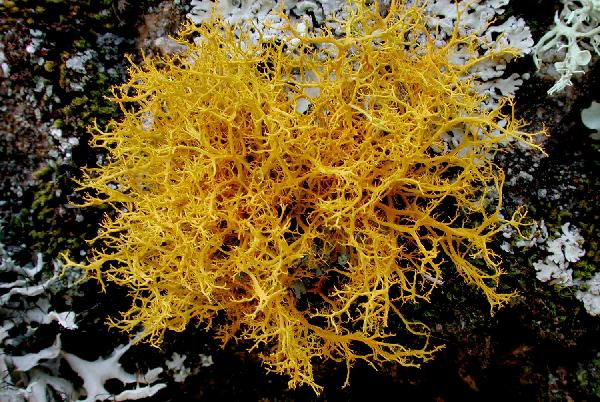Teloschistes flavicans (Sw.) Norman
Nytt Mag. Naturvid., 7: 229, 1853. Basionym: Lichen flavicans Sw. - Nov. Gen. Sp. Pl.: 147, 1788.
Synonyms: Borrera flavicans (Sw.) Ach.; Tornabenia flavicans (Sw.) A. Massal.
Distribution: C - Sar. S - Si (Nimis & al. 1994, Ottonello & Romano 1997, Ottonello & Puntillo 2009, Ottonello & al. 2011).
Description: Thallus fruticose, attached by a basal holdfast, almost filamentous, up to 12 cm long, tufted to pendent, more or less dichotomously and richly branched. Branches corticated, rigid, entangled, up to 2 mm wide, narrowing to 0.05-0.2 mm at the tips, terete to angular or somewhat flattened (especially the main ones) yellow-orange to reddish orange, with farinose to granular, yellow soredia in orbicular to elongated, at least at the beginning raised soralia; fibrils and hairs absent or scarce. Cortex of longitudinally arranged hyphae; medulla interrupted by cortical strands. Apothecia extremely rare, lecanorine, 1-4 mm across, with an orange disc and a thin, usually smooth, rarely sparingly ciliate thalline margin. Epithecium orange, K+ red; hymenium and hypothecium colourless. Asci 8-spored, Teloschistes-type. Ascospores 2-celled polarilocular, hyaline, oblong to narrowly ellipsoid, (10-)12-18(-20) x 6-11 µm. Pycnidia immersed to slightly projecting, orange. Conidia bifusiform, 2.7-3.7 x 1-1.5 µm. Photobiont chlorococcoid. Spot tests: thallus and soredia K+ red, C-, KC-, P-, UV+ intensely orange-red. Chemistry: anthraquinones such as parietin (major), teloschistin, fallacinal, and parietinic acid (all minor).
Note: a tropical to Mediterranean-Atlantic lichen found on branches, bryophytes and siliceous rocks in a few warm-humid stands of Tyrrhenian Italy, mostly near the coast in areas with frequent fog. It is included in the Italian red list of epiphytic lichens as “Endangered” (Nascimbene & al. 2013c).
Growth form: Fruticose
Substrata: bark
Photobiont: green algae other than Trentepohlia
Reproductive strategy: mainly sexual
Restricted to humid-warm, oceanic areas
Commonnes-rarity: (info)
Alpine belt: absent
Subalpine belt: absent
Oromediterranean belt: absent
Montane belt: absent
Submediterranean belt: absent
Padanian area: absent
Humid submediterranean belt: absent
Humid mediterranean belt: extremely rare
Dry mediterranean belt: absent

Predictive model
Herbarium samples
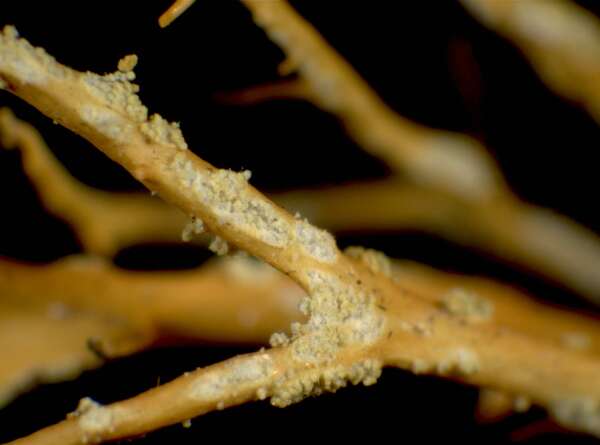

P.L. Nimis; Owner: Department of Life Sciences, University of Trieste
Herbarium: TSB (16076)
2001/12/11
soralia
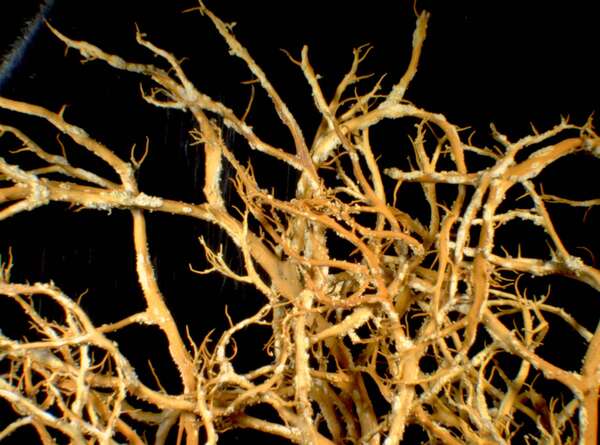

P.L. Nimis; Owner: Department of Life Sciences, University of Trieste
Herbarium: TSB (16076)
2001/12/11
Growth form: Fruticose
Substrata: bark
Photobiont: green algae other than Trentepohlia
Reproductive strategy: mainly sexual
Restricted to humid-warm, oceanic areas
Commonnes-rarity: (info)
Alpine belt: absent
Subalpine belt: absent
Oromediterranean belt: absent
Montane belt: absent
Submediterranean belt: absent
Padanian area: absent
Humid submediterranean belt: absent
Humid mediterranean belt: extremely rare
Dry mediterranean belt: absent

Predictive model
| Herbarium samples |


P.L. Nimis; Owner: Department of Life Sciences, University of Trieste
Herbarium: TSB (16076)
2001/12/11
soralia


 Index Fungorum
Index Fungorum
 GBIF
GBIF


